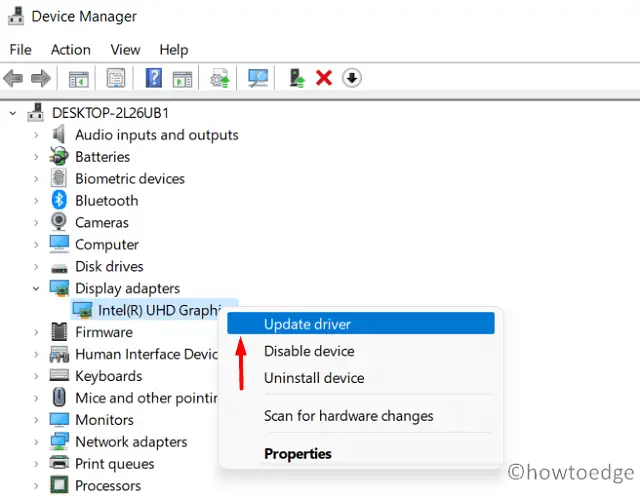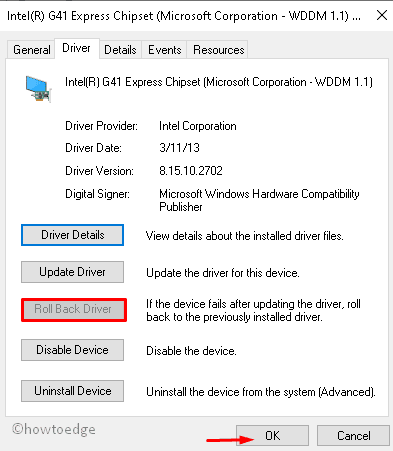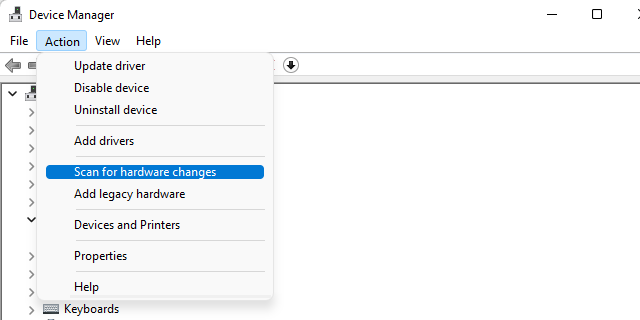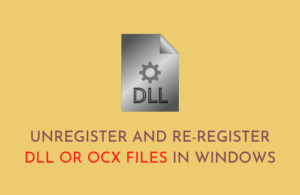Some Windows users inquired on Reddit as well as Twitter about the Intel Graphics driver issues like- suddenly stopped working after installing updates. The screen resolution compatibility issue primarily occurs on the HP machine. Today, in this article, we discuss the relevant information to address the unclear Display/Video/Graphics issues along with solutions to Windows 10 November 2019 Update.

What causes this error?
The display driver bug appears mainly due to corrupt system core files, hence, try updating the Windows as well as the faulty display adapter. Sometimes this trouble may occur after a recent update of a few drivers, so use Rollback the device driver feature or Run compatible mode to repair such drivers. In case the problem still occurs, Uninstall then Reinstall the driver may resolve the underlying cause. Let’s explore these workarounds in detail-
Common Display issues on Windows 10-
Some of the common graphics related issues you may experience while working on the Windows 10 system are as follow-
The display adapter swiftly stops working after installing updates.Your system's display might suddenly crash when you download the patches.The Nvidia graphics card drivers represent poor image rendering.After installing updates, graphics problems stuttering while playing video games.
Intel Graphics driver issue in Windows 10 after Update Solution
In this article, we explain how to solve the Intel Graphics driver issues on Windows 10 after the Update.
1] Update Windows 10
The pending available updates are the prime reasons that erupt driver issues on your system. So, Updating Windows 10 should be the first approach to fix the Intel Graphics driver issue on your PC. Follow these guidelines to perform this task-
- At first, press Win and I together to open the Settings app.
- When the application begins, select the Update & Security category.
- Jump to the right pane and press the Check for Updates button. This will automatically install if there are indeed pending updates available on your computer.
- Once finished, Restart your computer to save the changes made so far.
2] Update the Display Graphics driver manually
After installing updates, the display driver may still create a bug, it is thereby recommended to update the Intel driver. You should update the problematic driver by following these easy steps-
- Right-click on the Windows icon and select Device Manager from the Power Menu.
- From the installed list, expand Display adapters thereafter perform a right-click on the installed Intel Graphics driver.
- Here, select Update Driver using the context menu thereupon Search automatically for updated driver software on the next screen.

- This will look for a suitable driver on the manufacturer’s website, and follow the on-screen instructions until the task is over.
- Once finished, close the Device Manager and restart your computer. Lastly, you may check whether this resolved the Intel Graphics driver issues or not.
3] Run the compatibility mode
When you try to download the suitable driver from the Intel website, however, none is available there, you may use the compatible mode for the display driver. Here is how to do-
- Right-click on the setup file of the Display driver that you have recently downloaded and select Properties from the context menu.
- Move under the Compatibility tab and mark the checkbox against “Run this program in Compatibility mode for“.
- Just below this option, use the drop-down menu and select the OS (Window 8) in which the display driver is properly working.

- Now keep patience till the driver installs completely.
- Once finished, Restart your computer and see if the graphics driver is not causing any trouble.
4] Rollback the device driver
Some Windows 10 users have addressed the Graphics driver issue in Windows 10 just by rolling back the Screen resolution driver to its earlier version. This task is quite easy to perform, here are the essential steps-
- Right-click on Start and select Device Manager using the Power Menu.
- Locate and expand Display adapters.
- Then right-click on its driver and choose Properties.
- Under the Driver tab, moves below and hit the Roll Back Driver button.

- Subsequently, click OK then Yes on the confirmation screen to let this process begins.
- After finishing the above task, do Restart your PC.
5] Uninstall and Reinstall the Graphics driver
If the above workarounds fail to resolve the Intel Graphics driver issue on your system, you need to uninstall the obsolete device driver and fresh install the same from the Intel official website. Here is the complete procedure-
Step-1: Press the Win logo and R hotkey altogether to launch the Run dialog.
Step-2: In the void box, type devmgmt.msc and hit the OK button to proceed ahead.
Step-3: Next, expand the Display adapter followed by a right-click on the Intel HD Graphics Driver.
Step-4: On the appeared context menu, select the Uninstall device then Uninstall again to confirm this.

Step-5: At last, Restart your computer and check if the screen resolution is causing any issues or not.
Reinstall the Device driver
To reinstall the device driver, you need to go through the following procedure-
- Follow the Step-1 and 2 to launch Device Manager.
- When the app opens up, click on the Action tab and then the Scan for hardware changes option.

- You will receive a confirmation window asking to install the driver. Just click locate and install the recommended driver on your computer.
- Now follow the on-screen instructions to complete the remaining process. Once finished, Restart your PC.
I hope, this article helps in resolving the Intel Graphics driver issues on Windows 10 devices.
Why can’t I install the Intel graphics driver?
There are times when the Intel graphics driver fails to install. This is typically caused by not having access to support. Here is an alternate method of installing the Intel graphics driver. Download the appropriate drivers from the Dell Support website.




